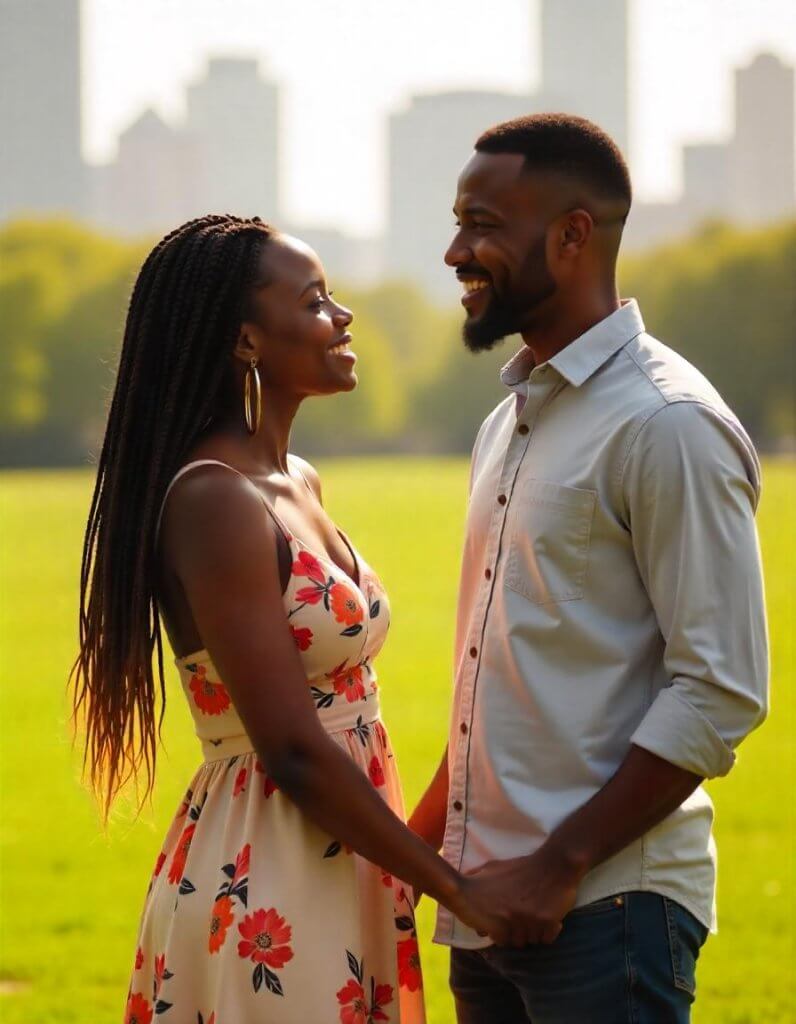
Origins of an Online Subculture
The term “incel” – short for involuntary celibate – was coined in the 1990s by a Canadian woman known as Alana, who started a support forum for people struggling to find romantic or sexual partners . In its original form, this online community was inclusive and empathetic, meant to help lonely individuals share their experiences. However, as the years went on, the tone of incel forums changed dramatically. What began as a benign support group spiraled into a misogynistic subculture dominated by young men who felt aggrieved by their lack of sexual success . Alana herself stepped away as the discourse on her site turned increasingly sexist, losing control of the term she created .
By the 2000s and 2010s, incel communities had found homes on platforms like 4chan and Reddit. These forums became breeding grounds for resentment. Many self-described incels nurtured a belief that women and society were to blame for their romantic failures – a view so pervasive that the Anti-Defamation League defines incels as “heterosexual men who blame women and society for their lack of romantic success” . Discussions in these groups grew more extreme, with some posters openly endorsing violence or rape as “punishment” for women’s perceived wrongdoing . Eventually, major platforms intervened: Reddit shut down its main incel forum (r/incels) in late 2017 for glorifying violence, after it had amassed over 40,000 members . This crackdown scattered the community to less regulated corners of the internet, where the incel ideology continued to evolve unabated.
An Online Ideology Turns Deadly
For years, the incel subculture lurked largely in the shadows of the internet – unknown to the wider public. That changed in 2014 with a horrific act of violence. In Isla Vista, California, 22-year-old Elliot Rodger murdered six people in a rampage, leaving behind a 137-page manifesto raging at women for spurning him. Rodger identified himself as an incel, and in the aftermath of his massacre he was hailed as a hero in incel forums . This was a wake-up call. Over the past decade, several other attacks in North America have been linked to men echoing incel ideology or extreme male supremacist beliefs . In 2018, a self-described incel in Toronto rammed a van into pedestrians, killing 10 people – one of the deadliest instances of incel-inspired violence . A 2022 U.S. Secret Service analysis warned that these “anti-feminist” or incel-driven attacks pose a growing terrorism threat, with dozens killed in the U.S. and Canada since 2014 . Incels had gone from obscure internet subculture to a very real-world danger.
Media coverage of these tragedies thrust incels into the mainstream consciousness. CNN, for example, felt compelled to publish an explainer in March 2023 titled “What does the term ‘incel’ mean?”, underlining that at its core an incel is “someone, usually a male, who is frustrated by their lack of sexual experiences.” The article noted that incel ideology is often accompanied by intense misogyny – a hatred of women fueled by a sense of entitlement and grievance. Incel communities, it explained, call for a rollback of women’s rights and a reversion to a patriarchal society where male desires would be fulfilled (some extremists even glorify the idea of using rape to achieve this) . Such ideas, once confined to fringe forums, are now discussed on primetime news and studied by threat assessment professionals. The incel subculture had firmly entered the public lexicon – and with that exposure came a flurry of questions about how it was evolving and where it might be headed.
Crossing Continents: Incels in the US and Europe
Though incel culture first gained notoriety in the United States and Canada, its reach is decidedly transatlantic. Incel communities have taken root in Europe as well, often via English-language forums but also in local contexts. Research shows most self-identified incels are in North America or Europe, with English-speaking online forums drawing users globally (even non-Anglophone countries contribute significant traffic to these sites) . In Italy, for instance, an incel community exists on a site tellingly named “Il Forum dei Brutti” (“Forum of the Ugly”) . While the heart of incel discourse remains on English-language platforms, European governments and researchers have grown increasingly aware of the phenomenon’s presence among their youth.
The United Kingdom provides a stark example of Europe’s encounter with incel ideology. In August 2021, a 22-year-old man in Plymouth, England, shot and killed five people in a rampage before taking his own life. It later emerged that he had been active on incel websites and absorbed those toxic ideas, though investigators stopped short of labeling the crime purely incel-motivated . The incident nonetheless served as a catalyst: teachers, police, and community observers across the UK began paying closer attention to young men expressing violent misogynistic views. According to official statistics, referrals of individuals to Britain’s anti-extremism Prevent program for incel-related concerns spiked in the year after the Plymouth shooting – 77 cases in the year to March 2022, up from virtually none in previous years . A senior counter-terrorism officer described incel ideology as an “emerging risk,” noting that its spread online was now triggering real-world alarms .
Elsewhere in Europe, authorities are likewise grappling with incel-linked threats. In 2020, Canadian authorities made global headlines by treating an incel-inspired killing as an act of terrorism, marking the first such classification . European security services have pondered similar questions: Does incel violence fall under terrorism? Or is it more akin to hate crime or a byproduct of untreated mental illness? So far, European agencies tend to see it as a form of extremism that can fuel terror but is not (yet) an organized terrorist movement. Law enforcement has noted cases where incel beliefs overlap with other extremist ideologies – for example, a British neo-Nazi convicted in 2023 was found to also identify with incel culture . This blending of grievances (misogyny, racism, alienation) poses a complex challenge for counter-extremism efforts on both sides of the Atlantic.
The Digital Ecosystem: Where Incels Gather Now
Online, the incel ecosystem has proven both adaptive and insular. When major platforms like Reddit and Twitter crack down on overt hate speech or calls for violence, incels don’t simply disappear – they migrate. After Reddit banned r/incels for inciting violence, many adherents regrouped on standalone incel forums (often on the fringes of the web with lax moderation) and on chat boards like 4chan or more obscure corners of Discord and Telegram. A Swedish government study in 2020 found that the three largest incel-dedicated forums globally had roughly 20,000 registered users, but only about 1,000 of those users were actively posting content with any regularity . This suggests a small number of hardcore contributors drives much of the incel conversation, while a larger lurker audience consumes the ideology more passively. Researchers caution that those lurkers should not be overlooked – even silent readers can become radicalized or inspired by the constant drumbeat of negativity and hate.
Within these online enclaves, incels have developed a distinctive jargon and worldview. Central to it is the so-called “blackpill” philosophy – a fatalistic belief that one’s genetic unattractiveness has doomed them to a life without love or sex. Incel forums reinforce this sense of hopelessness through repetitive memes and pseudo-scientific theories about looks, often accompanied by racist or homophobic commentary in addition to misogyny. Women of color, in particular, face a double dose of vitriol in incel discussions, targeted by both racism and sexism, as one content analysis found . Despite these toxic ideas, it’s important to note that incel communities are not monolithic in demographics or even in politics. A recent large survey of 561 self-identified incels (conducted in 2022-2024 by an academic team in the U.S. and UK) revealed some surprising diversity: about 63% of respondents were white, a smaller share than expected, and nearly 45% identified as left-leaning politically, roughly equal to the fraction that leaned right . In other words, not all incels fit the stereotype of a right-wing extremist; what unites them more is their anger and despair rather than a coherent left or right ideology.
Key Figures – Incel Subculture by the Numbers:
• Reddit r/incels members (2017, at ban): ~40,000 users
• Users on largest incel forums (2020): ~20,000 (with ~1,000 actively posting)
• Men under 30 who are single (U.S., 2022): 63% (vs 34% of women under 30)
• Incels with moderate-to-severe depression (2022 study): 75%
• Incels who say violence is “often” justified against those who hurt their community (2024 survey): ~5%
• Incels who met another incel in person in the past year (2024 survey): 18%
These figures underscore a few crucial points. First, the incel population online is relatively small – but its impact is disproportionate due to the severity of content and occasional acts of violence. Second, incels are intertwined with broader social trends: Young men today are indeed more likely to be single and sexually inactive than in decades past, a reality that provides a larger pool of the lonely from which incel subculture can draw. Third, mental health issues are extremely common among incels, with depression, anxiety, and loneliness at epidemic levels in surveys of this group . And while only a minority explicitly endorse violence, the combination of grievance and poor mental health raises concerns about self-harm and aggression, as even a small fraction translating words into deeds can have tragic consequences.
Loneliness, Masculinity, and the Mainstream Conversation
The rise of incels is intimately connected to a broader discussion about modern masculinity and isolation. In many developed countries, young people are having less sex and fewer romantic relationships than previous generations . There is talk of a “loneliness epidemic” among young men, some of whom struggle to form friendships let alone date. A recent Pew Research Center study found that 63% of U.S. men under 30 are single, far outpacing the 34% of women the same age who are single . This lopsided gap has prompted much debate — are young women dating older men? Are they opting out of relationships more often, or perhaps pairing with each other at higher rates as societal attitudes change? Whatever the causes, it’s clear that a significant cohort of young men feel left behind in the social and romantic arena.
This is the human context in which the incel subculture festers. Most men who experience loneliness or sexual frustration do not turn into misogynists or violent extremists, of course. But the incel community offers a seductive outlet for some of the most disaffected: it provides a narrative that explains their pain (blaming women or an “unfair” society), and a peer group that validates their anger. “Incels have built a shared identity and belief system around being involuntarily celibate,” explains Andrew Thomas, a psychology lecturer who has studied the phenomenon . The problem, he and others note, is that this identity often reinforces the very behaviors that keep incels stuck in isolation – creating a bitter echo chamber rather than encouraging any positive change.
Mental health professionals are increasingly weighing in. By all measures, incels as a group are suffering. Three in four incels show clinical signs of severe or moderate depression, and nearly half have severe anxiety disorders . A sense of hopelessness pervades their online posts. Vania Rolón, a researcher who has analyzed incel psychology, observes that many incels exhibit a high “tendency for interpersonal victimhood” – essentially, they see themselves perpetually as victims of others’ cruelty or neglect . In their worldview, nothing is ever their fault; it’s an unfair world that has wronged them. This mindset can become a self-fulfilling prophecy, trapping individuals in negativity. Some experts argue that tackling the incel phenomenon might best be approached as a mental health and social support challenge, rather than purely a law enforcement issue. “To those concerned about the harm that incels might do to society,” Dr. Thomas notes, “trying to alleviate incel suffering by improving their mental health would be a good route to reducing their chances of harming themselves and others.” In other words, helping young men feel less lonely and more hopeful could undercut the allure of the incel narrative.
Meanwhile, the themes underlying incel anger – sex, gender roles, masculinity – are increasingly part of mainstream cultural conversations. The past few years have seen a surge of interest in what some call the “crisis of masculinity.” Influencers like Andrew Tate garnered global attention (and millions of followers) by tapping into young male angst, promoting a cocktail of misogyny and performative alpha-male posturing . Though Tate’s brand of hyper-masculinity is distinct from incel fatalism (Tate advocates men amass wealth and women, whereas incels claim they can attain neither), both arise from the same cauldron of online gender discourse. The popularity of such figures signals that issues of male identity and resentment have seeped into the zeitgeist, forcing parents, educators, and policymakers to reckon with what boys are absorbing online. Even entertainment media reflect this trend: a 2025 Netflix show “Adolescence” centered its plot on a teenage boy steeped in incel ideology, bringing what was once an underground subculture to a wide audience in dramatic fashion . These developments suggest that, for better or worse, the incel phenomenon has become entwined with broader dialogues about youth alienation, dating norms in the age of apps, and the state of gender relations in modern society.
Cracking Down: Platforms and Policymakers Respond
As awareness of incel radicalization has grown, so too have efforts to counter it – or at least contain its spread. Social media platforms have taken a harder line against overt incitements of violence associated with incels. Reddit’s ban of incel forums was a notable early step, and Reddit has since removed other groups that skirted its rules by rebranding (such as a subreddit called “braincels”) . Facebook, YouTube, and Twitter also routinely remove content that glorifies mass shooters or pushes violent misogyny. However, enforcement is imperfect, and coded language or meme-ified hate can evade detection. There’s a continual cat-and-mouse game as incels migrate to permissive platforms or create new websites. Some incels have burrowed into private Discord servers or encrypted chats, making oversight even more difficult. The downside of deplatforming, experts warn, is that it can unintentionally harden echo chambers: “It’s important that efforts to clean up the internet don’t drive incels into more difficult-to-access parts of the internet,” cautions Dr. Joe Whittaker, a researcher who led a major incel study, pointing out that pushing a community further underground can make it even harder to engage and rehabilitate .
Governments, for their part, are starting to address the incel subculture through the lenses of national security, law enforcement, and public health. In the United States, federal agencies like the Secret Service’s National Threat Assessment Center have studied incels to better understand the warning signs before an act of violence occurs . Their findings emphasize the need for early intervention – for instance, getting troubled young men psychological help or mentorship before their despair curdles into violence. Lawmakers have also begun discussing whether misogynistic extremist violence should be categorized alongside other forms of domestic terrorism. (There is not yet a specific “incel law,” but an incident in Florida and another in Arizona led prosecutors to explore novel applications of hate crime or terror statutes against perpetrators influenced by these ideas.)
In the UK and Europe, authorities are balancing preventive measures with open debate on causes. The UK’s Commission for Countering Extremism recently went so far as to directly survey hundreds of self-identified incels, paying them a modest sum to answer questions in an effort to gather data and craft informed policy . That study – conducted by academics at Swansea University and the University of Texas – confirmed high levels of perceived victimhood, anger and misogyny among incels, but also noted that “not all incels have extreme views.” The researchers found it misleading to assume every incel is a violent threat . In fact, many incels expressed despair more than hatred, and only a small subset endorsed aggression. Still, the survey did find that about one in four incels believed violence could “sometimes” or “often” be justified against people who they think harm the incel community, which is a worrisome statistic . Governments are also looking at education and prevention: schools in some regions have started incorporating discussions about online extremism (including incel forums) into digital literacy and sex education curricula, aiming to inoculate teens against toxic ideologies. And in policy circles, there’s ongoing debate about whether new laws are needed to classify misogynistic motivated attacks as specific hate crimes or terrorist acts.
Internationally, cooperation is increasing. Intelligence agencies and law enforcement from North America and Europe share information on emerging incel-related threats, much as they do for jihadist or far-right extremist trends. Europol, for example, has analyzed incel online chatter to assess how it might radicalize individuals to commit acts of violence . And the Radicalisation Awareness Network (RAN) of the EU has published briefs for practitioners on the incel phenomenon, underscoring the challenges it presents to conventional counter-extremism approaches . One consensus that appears to be forming is that a hybrid approach is needed: part of the response will involve content moderation and policing (to mitigate the immediate threats), and part will involve social programs and mental health outreach (to address the root causes of incel recruitment, such as loneliness and social skills deficits). As Dr. Whittaker put it, solely focusing on banning content could miss the bigger picture – that many incels are “extremely depressed, anxious, and lonely” and in need of help as much as censure .
Outlook: Where Will the Incel Subculture Go?
Looking ahead five years, experts and observers offer a range of predictions for how the incel subculture might evolve. One hopeful scenario is gradual de-radicalization: as society becomes more aware of incels, there may be better safety nets to catch isolated young men before they spiral. This could mean more proactive mental health interventions, community programs to promote social inclusion, or even online outreach that offers incels alternative narratives (for example, forums focused on self-improvement and mutual support rather than woman-blaming). There is precedent for extremist movements petering out when their root grievances are addressed. If the current discussions about male loneliness and the need to reimagine masculinity lead to concrete action – say, campaigns encouraging men to build friendships, or dating apps improving the experiences of average-looking men – the pool of potential incels could shrink. Some incels might simply grow out of it as they age into new life stages or have personal experiences that challenge their black-and-white thinking.
On the other hand, the incel subculture might persist or even further entrench, integrating into other online movements. We may see more blending of incel ideology with adjacent extremist currents such as white nationalism or neo-fascism, especially in parts of Europe where far-right groups could exploit incel narratives of male grievance to recruit young men. Already, cases like the British neo-Nazi-incel crossover suggest a potential for convergence . In five years, “incel” as a standalone label might be less common, but its core ideas (extreme misogyny, entitlement, and fatalism) could live on under the umbrella of a broader militant misogynist or ultra-conservative movement. Alternatively, incels might rebrand and splinter into new subcultures – for example, some could turn to more explicitly self-improvement communities (blurring into the “men’s rights” or “pickup artist” spheres), while the more violent fringe could become part of what some analysts term “misogynist terrorism” .
Media coverage in the coming years will also shape incels’ evolution. As the topic becomes less novel, reporting may shift from sensational crime headlines to more nuanced explorations. We might see more documentaries and studies giving voice to rank-and-file incels (as uncomfortable as that may be) in an attempt to understand and perhaps rehabilitate them. It’s also likely that fiction and pop culture will continue to feature incel characters or themes – not to glorify them, but to reflect the very real social issue they represent. Such portrayals, if done thoughtfully, could spark public empathy for the underlying loneliness while still condemning the hateful ideology. Conversely, there’s a risk that ongoing attention could create a feedback loop: a fringe member of the community might seek infamy through violence precisely because the media spotlight is there, creating a copycat effect. Journalists and researchers are aware of this tightrope, and many now take care to avoid romanticizing or amplifying incel “heroes” in the eyes of the community.
Sociopolitical shifts will undoubtedly play a role. The next five years could bring economic changes, post-pandemic social adjustments, or new gender dynamics that influence how young people date and relate. For instance, if current trends continue, we may see more young women pursuing higher education and careers, potentially widening the perceived gap between genders that incels often cite (the trope that women only want high-status “Chads”). This could either feed incel resentment further or, optimistically, prompt societies to have frank conversations about gender expectations and empathy in relationships. Governments might also refine legal responses: more countries could follow Canada’s lead in classifying certain attacks as terrorist if motivated by violent misogyny , or they might invest in early-warning systems (such as school counselors flagging extremist ideological signs in troubled teens).
In the best case, by 2030 the incel subculture could be a diminished force – not necessarily gone, but with far fewer adherents and far less appeal to disaffected young men than it had in the late 2010s. Increased mainstream awareness and targeted interventions could channel would-be incels toward healthier outlets (therapy, support groups, skills training) before they get sucked into the online hate spiral. We may even see former incels speaking out about their journey out of the darkness, offering a roadmap for others to exit. De-radicalization programs, akin to those for former gang members or jihadists, might specifically address misogynistic extremism and help individuals rebuild their lives in the real world.
Yet one must also brace for less optimistic possibilities. The persistence of underlying issues – loneliness, economic disenfranchisement, cultural polarization – means the fuel for incel ideology will remain present. If those issues worsen (for example, if a protracted economic downturn leaves a generation of young men jobless and disillusioned), incel ranks could swell or their rhetoric could harden. Additionally, as technology advances, new fronts could open: consider the impact of AI and virtual reality. On one hand, AI companionship (in the form of chatbots or VR “girlfriends”) might alleviate some incels’ loneliness. On the other hand, it could deepen isolation or create unrealistic expectations that make real relationships even harder. The ethical and social implications of such tech will likely become part of the incel conversation too.
Five years from now, the “involuntary celibate” subculture may look different, but the societal challenges it highlights will still demand attention. Whether through deradicalization and support, or through stricter enforcement and accountability, the goal for both the U.S. and the European Union will be to prevent the worst outcomes – the heartbreak of more lives lost to pointless violence – while addressing the human needs that gave rise to this movement. As one researcher emphasized, incels are in many ways “as much a threat to themselves as to others” . The coming years will test our ability to extend empathy without endorsing hate, to offer off-ramps from extremism, and to foster a culture in which no angry young man feels that mass murder or online hate is his only path to feeling heard. The story of incels is still being written, and its next chapters will depend on how society chooses to engage with some of its most isolated members. In the end, steering the lonely away from the lure of hate and back toward hope may prove to be the ultimate challenge – and measure of progress – in the ongoing evolution of the incel phenomenon.













